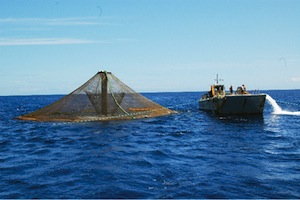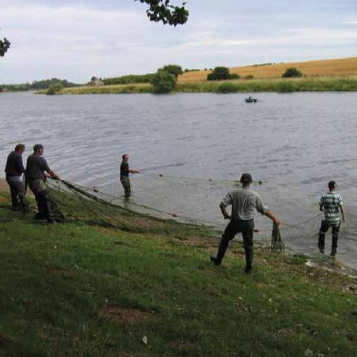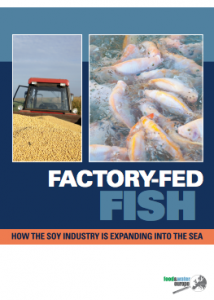The soy industry’s involvement in aquaculture is a tale of how far-reaching the influence of a large,powerful, well-organized agribusiness can be. Although soy is an unexpected and unnatural food for fish to eat, the research and outreach funded by the soy industry has propelled it to the forefront of alternative feed research in the aquaculture industry. Because of the widespread concern about fish farming’s reliance on small, wild fish for feed, the industry has been able to position soybeans as an answer to aquaculture’s sustainability problems. Unfortunately, however, feeding soy to fish is far from sustainable. By supporting factory fish farming, the soy industry could not only help to expand an industry that degrades marine environments, threatens wild fish populations and damages coastal communities, it could also extend its own negative impacts.
Blog Categories: fish farming
 Offshore aquaculture is factory fish farming of the sea, growing fish in huge, often over-crowded cages out in ocean waters. It can be problematic for both the environment and the economy. The waste – fecal matter, uneaten food, and any chemicals or drugs used in the operation – flows directly into the ocean, and the result could be long-term damage to the seafloor. Despite its negative impacts, the following groups push for, or would profit from, factory fish farming in the United States and Europe.
Offshore aquaculture is factory fish farming of the sea, growing fish in huge, often over-crowded cages out in ocean waters. It can be problematic for both the environment and the economy. The waste – fecal matter, uneaten food, and any chemicals or drugs used in the operation – flows directly into the ocean, and the result could be long-term damage to the seafloor. Despite its negative impacts, the following groups push for, or would profit from, factory fish farming in the United States and Europe.
 The open water aquaculture and salmon industries tout fish farms as an opportunity to create jobs. Given current economic struggles worldwide, any potential for a new industry to increase job opportunities is hard to dismiss. Viable, gainful employment is badly needed. Unfortunately, Food & Water Watch found that the jobs created by fish farms are unstable, in some cases undesirable, and are very few in number related to the number of fish produced. In fact, the trend in the industry has been to cut jobs to increase “efficiency,” and to abandon communities if better sites arise elsewhere. Moreover open water fish farms can threaten previously-existing jobs in tourism, recreational fishing and commercial fishing.
The open water aquaculture and salmon industries tout fish farms as an opportunity to create jobs. Given current economic struggles worldwide, any potential for a new industry to increase job opportunities is hard to dismiss. Viable, gainful employment is badly needed. Unfortunately, Food & Water Watch found that the jobs created by fish farms are unstable, in some cases undesirable, and are very few in number related to the number of fish produced. In fact, the trend in the industry has been to cut jobs to increase “efficiency,” and to abandon communities if better sites arise elsewhere. Moreover open water fish farms can threaten previously-existing jobs in tourism, recreational fishing and commercial fishing.
DOWNLOAD PDF VIEW ON SCRIBD



